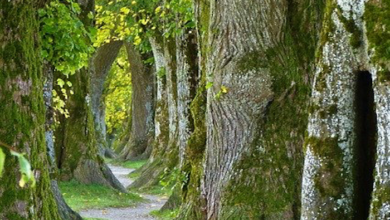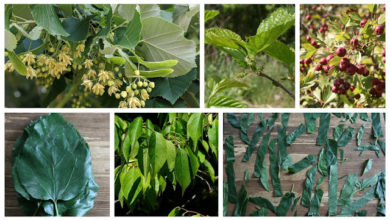
Lawns were a European invention, England to be precise, and they were the undertaking of the fabulously wealthy, seeking to bring the glade closer to home. Originally, they were cultivated with more useful (though not necessarily used) plants like chamomile or thyme. However, the trend moved towards closely cropped grasses, first maintained by grazing sheep then by men with scythes and finally, eventually, moving along (in fast forward) to the suburban land owner with his lawnmower, trimmers, and multitude of weapons against nature.
The thing is lawns are well-suited for most of Europe, with its mild and moist grass-friendly climate, and the European aristocracy, with its money to burn and self-interest at heart, but as the status quo around the world, it makes less and less sense. Lawns still have their historic ties to money — think golf and lawn-bowling, as well as the cost and time of maintaining a preened and pampered landscape—but even the less well-to-do have fallen victim to the “norm”. The lawn has so hypnotized the masses that we insist on growing them in any climate, including arid, to such a degree that often, in neighborhoods, it is illegal to grow productive plants in lieu of shortly shorn grass.

While nobody is suggesting that we inherently begin detesting grass, growing it on the scale we do and with all that effort to keep it cleanly cut, fertilized and free of weeds, i.e. natural biodiversity, is proving a huge burden on the planet, its animals (who aren’t allowed to graze on lawns), and the people so determined to have a perfectly picturesque front garden. Amazingly, we have found a way to both destroy the environment and ruin animal habitat, all the while giving ourselves heaps of work without any real return on the effort. (Obviously, planned and utilized lawns, such as sports parks or picnic areas, are of some value, but the average suburban lawn…)
The Destruction of the Environment

In most cases of the suburban lawn, it’s a completely artificially constructed environment that has been introduced in order to replace the natural flora that had been and would return left to its own devices. Obviously, with new developments (very questionably necessary) in suburbia, forests are felled, natural prairies degraded, and animal habitats dismantled. Each time we spread further afield rather than rebuilding lands we’ve already developed, we consume more space and leave what we’ve expended as yet another wasteland in our wake.
While all this destructiveness can’t entirely be blamed on the lawn, our insistence on having them over productive gardens or revitalized natural landscapes widens the footprint we make. Instead of filling in the gaps of our development with swaths of nature, we bend the entire world to our will, which seems to be grass road medians, grass parks, grass embankments and on it goes, with rarely any of it being used for grazing or food production. For all the resources we waste, we match with it entirely misappropriated land use. It’s not uncommon for city planners to actually outlaw serviceable fruit trees and edible plants.
The Misapplication of Valuable Resources

It would be bad, but no as bad, if our lawns weren’t so demanding. They go against nature. We fight weeds and trees from invading the landscape, which is desperately trying to repair itself with these pioneering species. We work sparingly with animals, leaving perches few and far between for the birds, vast expanses of land with no rockeries nor rotting wood for the lizards and frogs. The whole thing keeps growing, and we keep insisting that it stay short and green, its edges crisp and clear against the driveway, the sidewalk. We spend a lot of cash and a lot of time on the lawn.
For the battle against nature, we arm ourselves with petroleum-powered machinery. Our lawnmowers consume dwindling gas reserves while belching out unregulated carbon emissions into our seemingly pristine oases. Weed whackers are no better, weed killers even worse. We send bags of grass clippings, leaves, sticks and all other organic matter away in trucks, only to apply chemicals to keep the grass growing because nothing has been left to revitalize the soil to the sufficient level of richness it was when we had it trucked in. Somewhere near the sidewalk, with the sprinkler system spritzing, we post signs requesting others please not walk on the grass.
On a human level, the time it takes to wield all of this machinery in our individual battles against nature, and the hours worked elsewhere to afford to buy and maintain it all, robs us of at least one of the two days of freedom and leisure the same well-to-do folks who invented the lawn have allotted us for each five days of work we do. Or, as seems more often the case, we are actually working those five days to pay someone else for their five days in order that they come see that our lawns stay pretty so that we may enjoy departing for and returning from our daily commute. Time and money still factor largely in the lawn, though recessions and housing crashes don’t seem to.
The Revitalization of Something Better

But, the existence of the lawn is not inherent to suburbia. We invented it. Across the world, we adopted the practice, emulating the wealthy while starving ourselves and our small lots in lieu of more productive uses of space. We ditched simple gardens of food and instead devoted a couple of hours each weekend to the supermarket and Saturday mornings to weed eating instead of eating our own crops. Whatever spells the media and “the man” have cast on us, it was all our choice and one that the vast majority continue to make by adhering to neighborhood regulations and the prescribed normalcy of growing and cutting grass.
But, there is a revolution afoot, and it’s not about whether or not the grass is greener here or there but reinventing the lawn itself. In a word, we are revolutionary real estate spectators who notice the productive potential of these open spaces around our homes, and we are making gardens abundant with food and with a splendid array of colors, species, flowers, microclimates, water catchments, animal habitats, and patios (for the humans). Rather than crushing the spirit of nature, mowing her down every weekend, we are encouraging new growth, and new thinking, our minds not locked into the “need” to prove we can grow grass. We are not a cult, but rather cultivators, and we are looking for people to join us.
Learn more here and here and here and here and here and here, and that’s just to get started.














We let our guinea pigs free range on our patch of grass!!
Thinking of geese too! (Also as security guards!)
The lawn will go slowly as we grow food over it!!
Slow and small solutions!
We understand your point of view here. But not all lawns are bad for the environment. It depends on the purpose of it. Lawns can bring joy, comfort and healthy living not only in the property but also for the family.
The purpose has no impact on it’s harm to the environment. How happy something makes you doesn’t change the damage it causes. The fertilizer runoff alone is changing our waters negatively. Research the cause of algae blooms and think of all the nitrates running off your neighborhood laws when it rains. It all leads the the rivers and oceans.
Just get a clover lawn it won’t bring you or your family any less happiness
I am amazed at the amount of noise modern lawn mowers make. When I was young in the 1960s and 1970s they had half horse power cylinder mowers and they were not too bad.
The modern ones are sold by the horse power, 5 horse power being an entry level model.
They make a lot of horrible noise that drifts across boundaries and ruins the pleasure for anyone who just wants a peaceful time in the garden.
If a lawn must be had I certainly would use a traditional cylinder mower and convert it to run on a mobility scooter motor and battery with a solar panel on the shed roof.
I ripped a lawn up and grow food plants where it once existed.
I grow grapes elderberries raspberries numerous flower breeds. Including many varities of sunflower and a peach tree allong with hundreds of strawberry plants. No pesticides not always mowed properly and def some weeds. We have a ton of friendly happy bees frogs monarchs. We have been turned in and fined for this. Because it’s growing into each other. I will be fighting this next time as I do believe not only are we giving back the birds eat good of our plants. It’s productive and in times like we have today who knows when good supplies will dwindle. We do everything naturally with no synthetics. The amount of berries we get each year is truly amazing! I can’t wait to get more land to actually homestead!